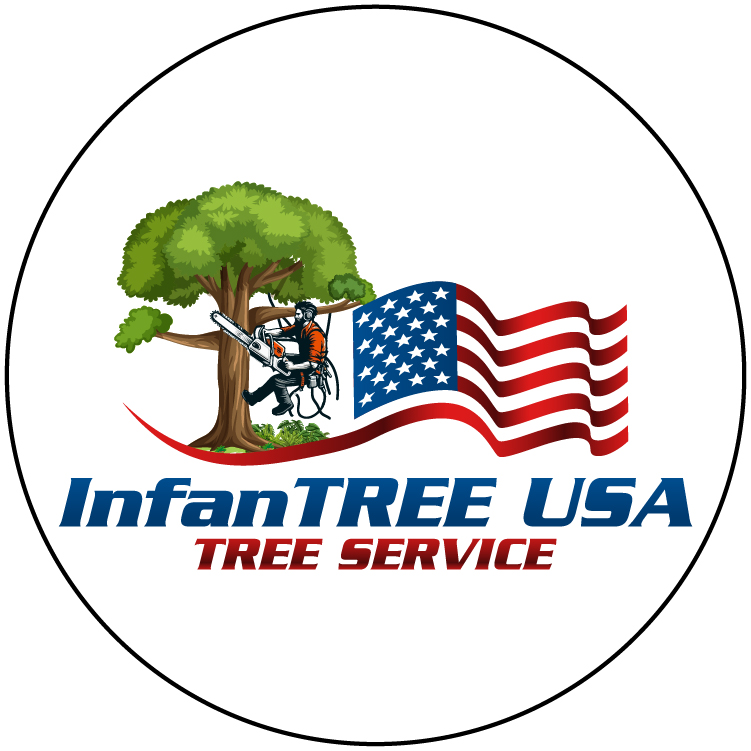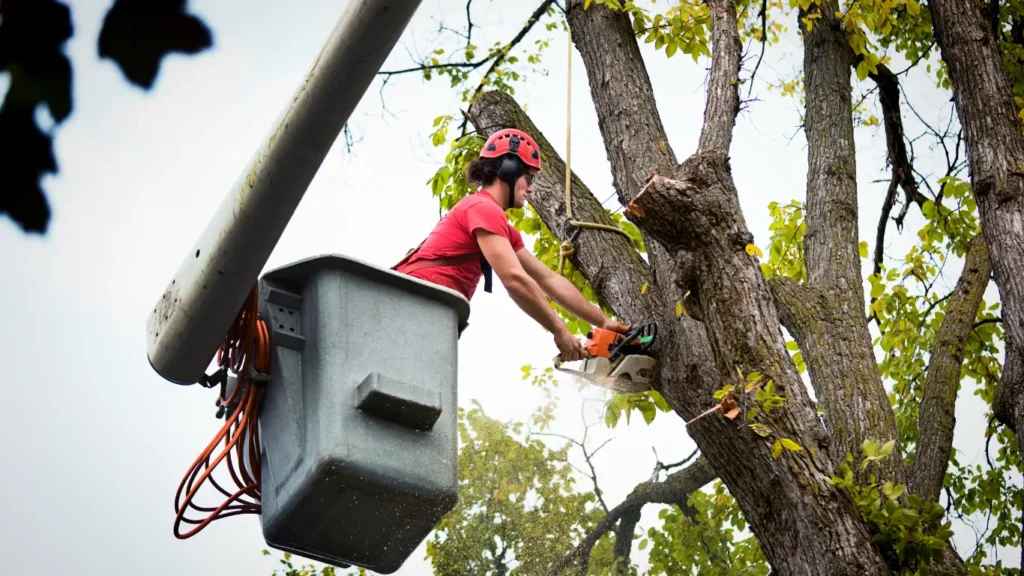Thinking of removing a tree from your property?
Hold that saw! Before you make any cuts, diving into the local tree removal permits and regulations is crucial. Every area has its own set of rules, and what you don’t know can hurt your wallet—or even land you in legal hot water.
From fines to forced replanting, the consequences of skipping this step are as real as they get. But don’t worry. Navigating these regulations is easier than you think. It’s your first step towards hassle-free, lawful tree removal.
Let’s ensure your tree project is above board and beneficial for both your property and the community.
Why Are Permits Necessary for Tree Removal?
- Public Safety: Permits ensure only trees posing safety risks are removed. They prevent accidents and ensure safe removal practices.
- Preservation of Wildlife: They protect ecosystems, ensuring tree removal doesn’t harm local wildlife or biodiversity.
- Protection of Property: Regulations maintain private property values and community benefits. They consider the impact of tree removal on the environment and aesthetics.
- Urban Canopy Management: Local governments use permits to oversee the health of urban canopy trees. Through informed tree management, this promotes air quality, shade, and neighborhood appeal.
Do You Need a Permit for Tree Removal?
In Florida, tree removal often requires a permit, depending on the tree’s size, species, and location. Here’s what you need to know:
- Size Matters: Trees with a Diameter at Breast Height (DBH) of 4 inches above ground level or more typically need a permit.
- Protected Species: Some trees, like mangroves and the Cabbage Palm, are protected across the state. Removal of these requires special permission.
- Location is Key: Trees in conservation areas or designated as historic or significant may have stricter regulations.
- Invasive vs. Endangered: Invasive species like the Brazilian Pepper Tree might be removed without a permit. However, trees housing endangered species are protected.
- Heritage Trees: Huge, rare, historical, or landmark trees might be completely protected from removal.
It’s important to note that tree removal regulations are highly localized. What applies in one county or city may not apply in another.
How to Understand and Find Tree Removal Regulations
Contact Local Municipal Offices
Contact your city or county’s environmental, natural resources, or urban forestry department. Their contact information is usually listed on the municipality’s official website. Ask specific questions about permits, protected species, and regulations relevant to your property.
Visit Official Websites
Many Florida municipalities provide tree removal guidelines online. Use the official website of your city or county. There, you can find information on tree removal policies. You can also download permit application forms and understand the process and fees involved.
Consult Professional Tree Removal Services
Professionals familiar with local regulations can guide you through the permit process. Choose a service experienced in your area, and inquire if they offer assistance with permits.
Key Tips:
- Environmental Impact: Be aware that Florida’s regulations often consider the environmental impact of tree removal. Plans for replanting or land restoration may be necessary.
- Stay Informed: Regulations can change. Stay updated on local environmental initiatives and ordinance amendments. Subscribe to newsletters or alerts from local government or environmental groups.
How to Apply for a Tree Removal Permit
Step 1: Check if You Need a Permit
- Not all trees require a permit for removal. Check local criteria based on size, species, and location.
Step 2: Gather Required Documents
- Information on the tree (species, size, location), property details, reason for removal, and possibly a site plan.
Step 3: Submit Your Application
- You can apply through your city or county’s Environmental Services or Urban Forestry Department. You can apply online, in person, or by mail. Application fees vary ($25 to $150+).
Step 4: Inspection and Assessment
- An inspector may assess the tree. The review process can take from a few business days to several weeks.
Step 5: Receive Your Permit
- You’ll get a permit with conditions (e.g., replanting requirements) if approved. You’ll be informed why and how to appeal or modify your application if denied.
Step 6: Proceed with Removal
- Follow the permit’s guidelines for removal. Some localities require post-removal actions, like submitting proof of removal or replanting.
It’s important to note that this is a generalized process, and local variations can include additional steps or requirements.
Denied Tree Removal Permit? Here’s What to Do
- Review the Denial Letter: Understand why your application was rejected. Common reasons include protected trees or environmental impact concerns.
- Consult Local Authority: Contact the issuing department for clarity or suggestions on modifying your plan.
- Appeal the Decision: Investigate local appeals procedures. Prepare a strong case with additional evidence, such as an arborist’s report or photos.
- Modify Your Plan: Adjust your removal proposal based on feedback. Consider replanting or altering the scope of removal.
- Consult Professionals: Work with certified arborists or experienced tree removal services to revise your application.
- Explore Alternatives: If removal is unlikely, consider pruning or treating the tree as a compromise.
- Stay Informed: Keep up with local tree protection ordinances and engage with your community for support.
Hiring a Professional Tree Removal Service
Why Hire Licensed Professionals?
- Compliance: They know local laws/regulations, ensuring legal compliance.
- Safety: Trained to remove trees, reducing injury/damage risks safely.
- Liability: Carry liability insurance, protecting you from accident-related costs.
Choosing the Right Service: Key Tips
- Insurance: Verify they have liability and workers’ compensation insurance.
- Certifications: Look for services with certified arborists (e.g., ISA-certified).
- Permit Experience: Choose those experienced in the permit process for smoother approvals.
- References/Reviews: Check for positive feedback and request recent client references.
- Written Estimates: Get detailed estimates to compare costs and understand the services included.
- Professionalism: Assess their communication, responsiveness, and willingness to answer questions.
- Equipment: Ensure they have the necessary tools for safe and efficient removal.
Post-Tree Removal Requirements
Stump Removal: Options for aesthetics and safety include complete removal or grinding below ground level.
Replanting: Often encouraged or required by local ordinances. Opt for native species of trees to support local ecosystems and ensure easy maintenance.
Notifying Local Authorities: In some areas, you must notify them when the project is done. You might also need a final inspection to check if it meets regulations.
Site Safety and Cleanliness: Fill holes, remove debris, and ensure no hazards remain. Proper disposal of tree debris is crucial for environmental protection.
Ready to Tackle Tree Removal with Ease?
Don’t get tangled in the web of permits and regulations as a property owner!
Infantree USA is your go-to expert for hassle-free tree removal services. We’re here to guide you through every step, from understanding local laws to the final clean-up.
Need advice or ready for action? Our team is just a click away. Visit our website, and let’s make your tree troubles a thing of the past. With Infantree USA, it’s smooth sailing from consultation to completion.
Contact us today—let’s keep your property safe, legal, and absolutely stunning!
Bottomline
Understanding and following local tree removal regulations isn’t just about ticking boxes. It’s a vital step in being a responsible community member and a guardian of the environment. Every tree removal decision carries weight, impacting not just your property. It also affects the air we breathe, the wildlife we coexist with, and the green legacy we leave behind.
We urge you to approach tree removal with mindfulness and respect. It’s not merely a matter of legality but of environmental ethics. Before you remove it, think about the alternatives. And when removal is the only option, ensure it’s done right—legally, safely, and with minimal impact on our planet.
Let’s not just cut down; let’s also look after. Because the trees we care for today will shape the world we live in tomorrow.







